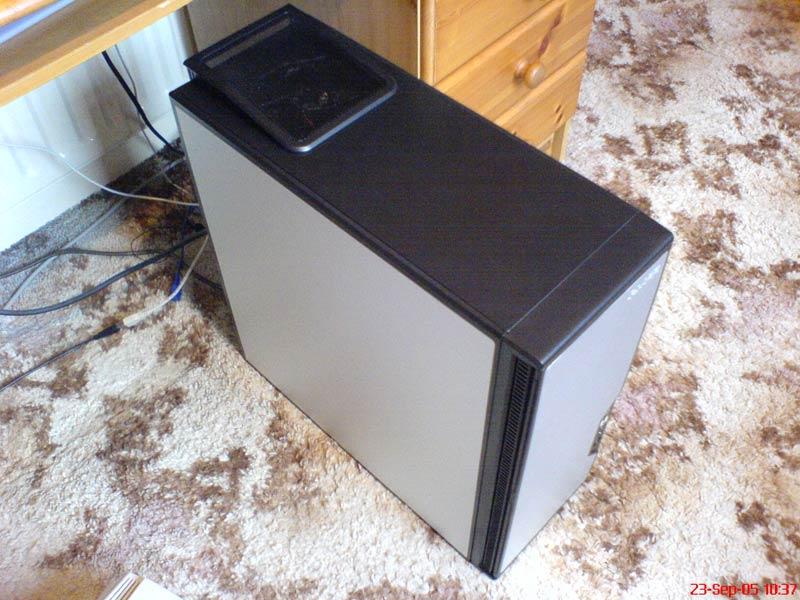D-Link DNS-323 2-Bay Network Storage Enclosure Review
Installation:
The DNS-323 is a BYOD (Bring Your Own Disks) device, which means it ships without drives. You will need to supply at least one 3.5” SATA drive of any size. You access the drive bays via the front of the unit. Removing the front panel is a simple matter of sliding the panel upwards and pulling it toward you. Once removed, you see the bays where the drives are installed with the SATA backpanel in the rear. You'll also notice the chassis allows for enough air space in between the two drives to assist in cooling. To give you an idea of just how compact this NAS device is, it's a little taller and about the same width as three paperback novels.
By now, it's obvious the DNS-323 uses a tray-less mounting system. It's important to line the drive connections up correctly by making sure they are on the lower left side before inserting the drives. Mounting the drives is as easy as inserting a tape into a VCR; they just slide into the bay and seat into the backpanel with a gentle push. Once firmly in place, the front of the drives should be flush with the front of the chassis frame. At this point I noticed there was a small amount of play in the drives, allowing the front of the drives to wiggle a bit since they are not mounted using any type of hardware, but are only held in place by the friction of the power and data connections on the rear of the drive. This could be a real issue and put a lot of stress on the connections whenever the unit is moved. My fears were alleviated once I replaced the front cover, though, as I noticed there was no longer any drive moment and everything felt rock solid. The secret is in a rather ingenious design on the back of the front cover that employs a pair of tensioning springs that press firmly against the drives, holding them securely in place. The springs also act to keep the front cover in place – grasping the cover doesn't give the impression that it will accidentally come off. Removing a drive is a simple process of removing the front cover and activating the drive ejection lever on the rear of the chassis by placing your finger behind the lever and pulling down. Warning: The DNS-323 does not support hot-swap drives, so the unit must be powered down before removing a drive. Also be careful to remove the front cover prior to ejecting the drive and make sure you return the drive eject lever to the up position before attempting to replace a drive. Once the drives are installed you need to reinstall the front cover by reversing the removal process and you're good to go. The added weight of the drives give the unit an even sturdier and solid feel. The entire drive installation process is quite simple and straightforward and took under a minute to complete the entire process.
The final stage of the installation process is to connect the unit to your network using the included Ethernet cable. The DNS-323 is capable of connecting at either 10/100/1000 Mb/s speeds. Connecting to a Gigabit Ethernet network requires a Cat-5e/Cat-6 cable for optimal performance and I was pleased to see the included cable was rated at Cat-5e. Once connected to the network, the external power supply can be connected to the back of the box and plugged into the wall outlet. When the power button on the front panel is pressed, the unit will go through the boot-up process and the power button will flash until the process is complete.



 Facebook
Facebook Twitter
Twitter YouTube
YouTube RSS Feeds
RSS Feeds





